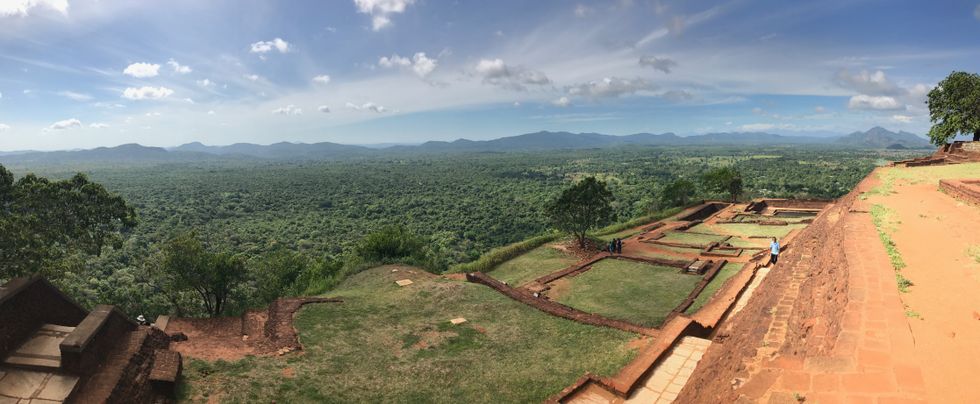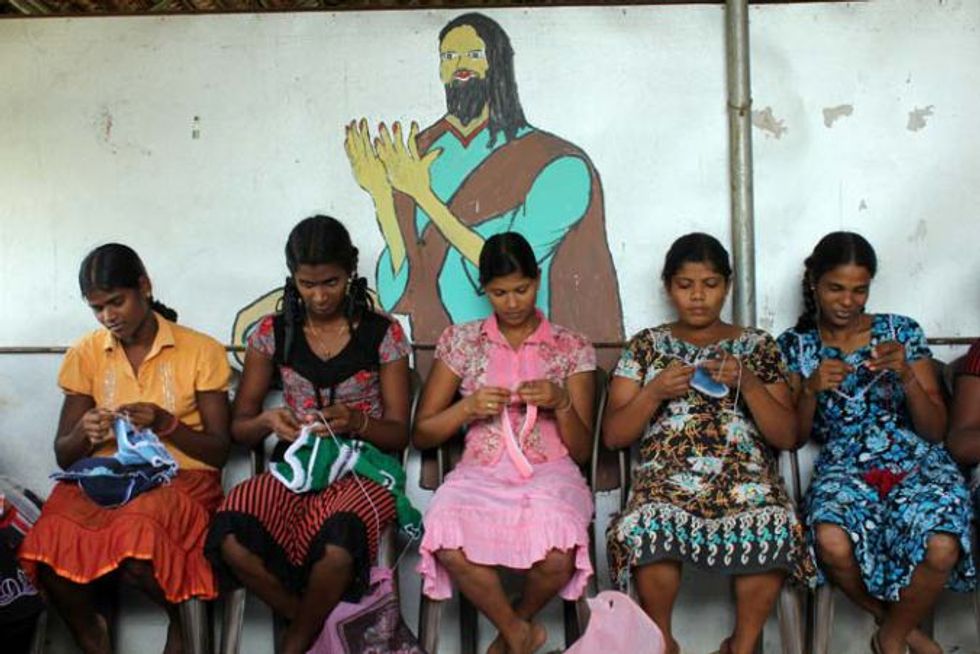After traveling abroad this past summer, my class was posed with a question: If you could come back to Sri Lanka for a longer portion of time, what kind of project would we choose to embark on? I've always been interested in politics and wars, and exploring a nation so wrought with trouble over the past few decades was incredibly eye opening.
This proposal addresses my idea for a documentary investigating the political climate of Sri Lanka, post-civil war, with an emphasis on how art is used for both propaganda and resistance. This documentary would be shown in America in an effort to raise awareness of a war many people don’t know about, demonstrate the power of art forms in a country where we seem to devalue art, and create a dialogue about a small country with many complex cultural aspects.
I’ve always been interested in politics, but my awareness of such things peaked during the American election this past fall. Understanding the power governments and politics hold, and the fallout from their failures, became a mission of mine. Sri Lanka was a unique experience for me because the government I’ve been raised under is so different than the government Sri Lankan people know. Sri Lanka dealt with nearly 30 years of civil war due to tensions between two groups; the Sinhalese Buddhists and the Tamils who are an ethnic group from India. Sri Lanka’s reformed government is still in its infant stages, and is still full of controversy and propaganda. As a lover of documentaries, I feel that an inquiry into the workings of the government would be done best through film including interviews, visual evidence of propaganda and resistance art, and footage of the devastation of the war.
Few Americans even know where Sri Lanka is located, so I feel as though there is an immense untapped audience who may find interest in a topic as untouched as this. Additionally, we have found ourselves in a time where many do not trust our government. One lesson I learned from this trip to Sri Lanka was that our cultures may differ, but our emotions and struggles are still relatable; perhaps an American audience would relate much more than they would initially think to this film.
The surface level information that’s key to understanding the political climate in Sri Lanka is copiously available on the internet. The tensions leading up to the conflict were caused, mainly, from the Sinhalese majority aggressively discriminating against the minority Tamils. This was done frequently through political power, including a law enacted making it nearly impossible for Tamil people already residing in the country to keep or acquire citizenship. By the early 1980’s, the Liberation Tigers of Tamil Eelam, known as the LTTE or simply the Tamil Tigers, were beginning to form. Their platform rested on a desire to create a separate, ethnically-based nation in the north and east of the country. Between 1983 and 2009, the Tamil Tigers executed many terrorist attacks, eventually becoming recognized worldwide for their frequent use of suicide bombers. The government fought back with troops in the northern and eastern parts of the island, where the Tigers were based. It’s estimated that upwards of 100,000 people, nearly half of which were civilians, were killed in the thirty-year war.
While the Sri Lankan government did regain full control of the island at the wars end, there are still many issues threatening peace in the country. Government leaders face dangers often, there is still a resistance group residing in the northern province, and Tamil discrimination has not fully stopped.
Delving into further information about this subject has been incredibly tough. Since I don’t speak or read any of the local languages I can’t actively seek out or read art containing language. Additionally, I can’t search for websites made directly by the people affected unless they’re already in English.
I feel that I did learn a lot from talking to the people we met in Sri Lanka. Three experiences in particular stand out. Lelith, our driver, toured me around the Buddhist museum at the Tooth Relic Temple in Kandy. While talking to me about the photos of the 1998 bombing, he kept repeating to me, “I don’t know why the Tigers did what they did. We [the Sinhalese] did nothing to them. They just kept attacking us for no reason.” It was incredible to me that he saw no wrong in his own people, but when I asked the students at the university, they also agreed with Lelith.
While we were driving through Colombo there were loud speakers that would turn on and a monk would begin singing prayer. It sounded rather rhythmic and beautiful at first. It seemed to me that Buddhism was a singular unifying force for these people, and that it was accepted enough to have these speakers start singing prayer throughout the day. However, I wondered how the minorities felt about this. I’m used to living in the United States, where religious freedom is wholly protected under written law, and where I can appreciate someone else’s songs without joining them myself. I pondered this until the issue was revived in my next example.
We attended an art history lecture that was eye-opening to me on this issue. The focus of the lecture was how Sri Lankan people are turning a blind eye to the cultural mix within their country, and are instead focusing on the Buddhist history and art. In fact, Sri Lanka is a melting pot of all sorts of different groups, including Buddhists, Hindus, British and Muslims. The professor told us that students are taught that there was no art in Sri Lanka until the introduction of Buddhism, which is untrue, and that the most culturally relevant group is the Sinhala people. He seemed almost frantic when he urged us to think about how this could start another war; if a group of people is continuously ignored--despite holding a large portion of the island’s territory and contributing heavily to society and culture--they will choose to rebel again. This neglect of recognition could ignite another civil war.
This is where I gained my interest in resistance art and propaganda, and felt that interviews and video footage would tell this story best.
To begin this project, I would need to gather documentary supplies including, but not limited to, a camera, sound equipment, a crew and a loyal translator. The translator would be most important of all, considering the intensity of the language barrier in some parts of the country as well as my desire to investigate art and propaganda, which may contain written portions.
We’d have to travel back to Sri Lanka and be prepared to ask tough questions and seek out answers that people may not enjoy us having. For example, it’s rumored that there are continuing disappearances of Tamil nationals in Sri Lanka, and many blame the government and its bid to keep the peace. Many of these disappearances are documented on handmade missing persons’ posters in the northern part of the country. If we were to choose to investigate those allegations, or gather information on those posters, we could risk getting involved in tricky information.
To gather interviews and opinions, I’d stop in a number of specific places. I would want to explore Colombo one more time and interview Sinhalese Buddhists in the nation’s capital. Perhaps we could even speak with government officials. I would want to interview local artists, especially the sculptors who created the statues of the presidents in front of the government buildings. I think it would be interesting to know their thought process behind making that art and what it means to them. It would also be helpful to explore the city with just a translator who could decipher postings and signs for us. Then I would want to travel the east coast up to Jaffna, in the north, where much of the war was fought and were scarred earth still stands out. I feel I could gather interesting perspectives and examples of art there.
During what online research I could accomplish I stumbled upon one readily available example of propaganda.
Pictured here are ex-LTTE fighters. These women used to willingly wield guns for their peoples’ liberation. Now, they are some of the last prisoners at a government vocational office in Jaffna. This photo is also framed and hanging in that office’s lobby as an example of a successful rehabilitation of these women.
Through my tour of the country, I’d hope to see that photo, and more art forms, demonstrating an alliance to one side or the other. There is also a large military presence in Jaffna to this day, which I see as being a perfect environment for creativity and rebellious tendencies.
Overall, I’d hope that a focus on art could capture perfectly the sheer difference in locations so near to each other on an island, yet so far apart in ideology.
In a proposal as giant as this one, there are tons of loose ends that would need to be tied. I’d have to make incredible connections to the country and its history in order to gain the trust of the people I’d be interviewing. Being an outsider doing the work of a near sociologist is certainly a disadvantage. The language barrier is a continuous threat, and learning both Tamil and Sinhala is a lofty goal. Attaining permission to film on a topic this touchy is also tricky, especially since I would be probing at a very sensitive wound that hasn’t yet healed. I would need to find someone to fund the whole endeavor, and insure that there’s an interested enough American audience that I can serve the information to.
The biggest limitation of this proposal is simply how large the idea is. While it’s unreachable to me at the current moment, I do feel that it is something I could do in the future.
Sri Lanka is a wonderfully complex country. I want to use art, both resistance and pro-government, as a lens to frame the post-civil war lifestyle on the island. I feel that by investigating both sides of the conflict, I can paint a complete cultural picture, inquire into the inner workings of the peace agreements and critique the offenders equally. By doing so, I can bring to life the diversity of a growing country, and introduce it, a world away, to America. I hope, then, to open dialogue and discussion in a time where we, ourselves, are dealing with political unrest and uncertainly.

















